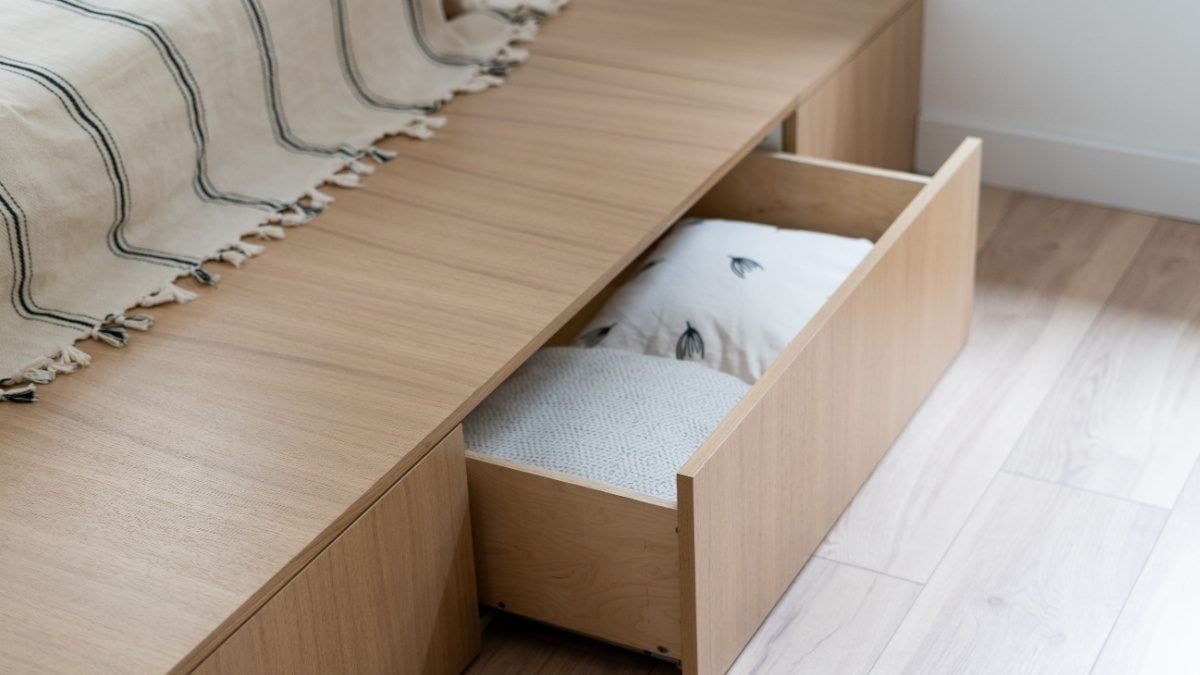Advanced laminates have properties that make them highly resistant to moisture.
Waterproofing your home is essential to protect it from the adverse effects of the monsoon season.
As the rainy season approaches, homeowners are often plagued by the looming threat of moisture. This problem not only affects the structural integrity of homes but also creates an unhealthy living environment. To help you combat moisture effectively, we have compiled the best tips to make your home waterproof this season.
- Protect your furniture with uPVC edgingFurniture is often the most affected by moisture, causing its edges to swell and its appearance to suffer. According to Manish Arora, Vice President of Furniture Solutions at REHAU SOA, using uPVC edging is an effective way to protect furniture from moisture. “These edgings are designed to be highly water-resistant, preventing water from seeping into the core material of the furniture. When uPVC “zero-joint” edging is included in decorative and utilitarian laminate furniture, it not only improves the longevity of the furniture but also maintains its aesthetic appeal, even during the wetter seasons,” says Arora.
- Use high quality laminates for surfacesAjay Khurana, MD, Formica India, highlights the importance of using high-quality laminates on surfaces like countertops, cabinets and walls. “Advanced laminates have properties that make them highly resistant to moisture. The non-porous surface of these laminates prevents moisture from seeping in, thereby protecting the underlying structure from dampness. Moreover, these laminates are available in a variety of designs and finishes, allowing you to maintain aesthetic appeal while ensuring functionality,” explains Khurana.
- Sheets and laminated panels on wallsTraditionally painted walls tend to retain moisture, which can lead to damp patches and paint peeling. Arora suggests using laminate sheets and panels on walls to prevent this. “Good quality laminates are robust and made of moisture-resistant material that provides an excellent moisture barrier. Unlike paint, laminate does not absorb moisture, making it an ideal choice for areas susceptible to humid conditions,” he says. Moreover, acrylic laminates have a higher moisture tolerance than regular laminates, adding functionality and elegance to your interior décor.
- Opt for laminates with anti-fingerprint and self-healing propertiesIn areas with high humidity, such as kitchens, Khurana recommends using laminates with anti-fingerprint and self-healing properties. “These laminates are designed to repel moisture and resist stains, making them easy to clean and maintain. The anti-fingerprint feature ensures that surfaces remain stain-free, while the self-healing property allows minor scratches to fade over time. This combination of features not only keeps your home looking pristine, but also improves its resistance to moisture and wear,” Khurana advises.
- Ensure adequate ventilation and insulationMaintaining adequate ventilation and insulation is key to preventing dampness. Arora stresses the importance of good ventilation to reduce humidity levels and minimise the development of mould and mildew. “Proper insulation prevents the build-up of condensation, which can lead to damp problems. Using damp-resistant flooring and weather-resistant fabric materials also creates an extra layer of defence against moisture infiltration,” he suggests.
Waterproofing your home is essential to protect it from the adverse effects of the rainy season. The measures described above not only provide immediate protection, but also contribute to the long-term durability and aesthetic appeal of your living spaces. By implementing these strategies, you will be able to enjoy a dry, comfortable, and healthy environment during the rainy season. The decision is yours – good luck!












